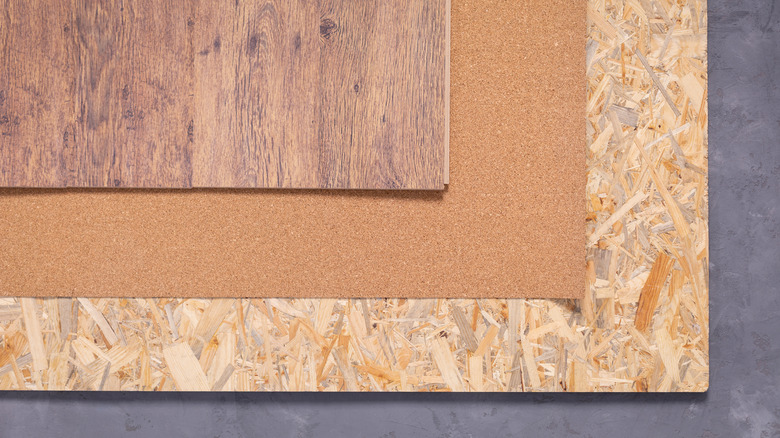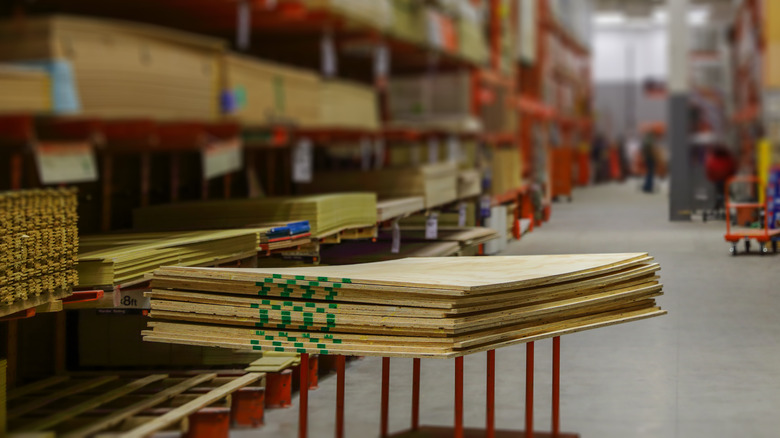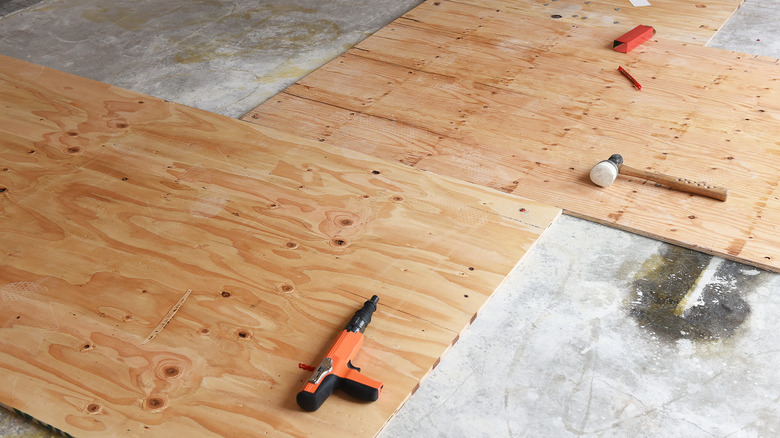OSB Vs. Plywood: How To Know Which Subfloor To Choose
Choosing between plywood or OSB for the subfloor of your home project comes down to three questions. What is your budget? What kind of use will the floor see? What is the environment like? Before we break down each question, let's establish what a subfloor is and why it matters.
A trio of materials makes up the flooring of your home. There's the subfloor which is most often constructed of plywood or OSB, a softer material used as protection called the underlayment, and then the flooring itself. The subfloor is the base of this trio, making its structure vitally important to the longevity of your floors.
Though the two have their own strengths and weaknesses, plywood and OSB are both sturdy options for a subfloor. For some, picking one over the other may simply come down to budget. OSB is significantly cheaper than plywood. Using plywood in a small area may not bust the bank, but your price point will extend greatly if you do a complete build or renovation with it.
Uses and environment for OSB and plywood
If budget is not a concern and you simply want to choose the best product, it's time to consider the use of the floor and its environment. Plywood is typically stronger and more durable than OSB because of how it's made. As the name might imply, plywood is several layers of adjacent wood fused together with an adhesive. The grains of wood are aligned at a 90-degree angle. These angles help strengthen the board and make it more durable.
The small pieces of wood that make up OSB, or oriented strand board, have no kind of uniformity, which docks its strength and makes it more susceptible to cracking under heavy pressure. The true benefit of OSB, outside of budget, lies in its pliability. It cuts and molds much easier than plywood. OSB is also denser than plywood, and you can buy it in larger sheets which can cut down on labor.
OSB and plywood differ greatly when it comes to water exposure, too. Though OSB resists water better than plywood, it actually reacts worse to prolonged wetness. When plywood gets wet, it will absorb and expel that water quickly before returning back to its original shape. OSB won't absorb water nearly as fast and won't dry quickly, either. As that water sits, the edges of an OSB board will swell to the point that likely will not reverse.
When to replace your home's subfloor
If you take time to consider use and environment, a well-constructed subfloor of either OSB or plywood could very well last a lifetime. In fact, once the top layer goes on, subflooring can often go out of sight and out of mind. If trouble does start brewing under the surface, you'll likely see a sign or two.
When your home's subfloor needs replacing, your floor may start speaking to you, literally. Loud squeaks can indicate the subfloor and its support beams have separated. This separation allows the floor to ebb up and down, rubbing against the nails underneath and producing an annoying squeak.
If your subfloor becomes water-damaged, signs for help will come in the form of odor. A musty smell may indicate the growth of mold or mildew. This is a problem that will need to be addressed quickly. Other indications your subfloor needs to be replaced include cracking tiles, cupping hardwood, and soft spots.


